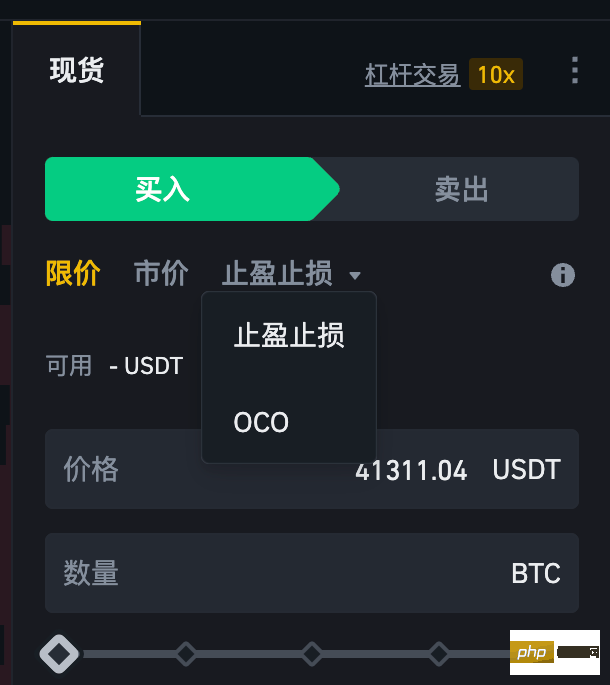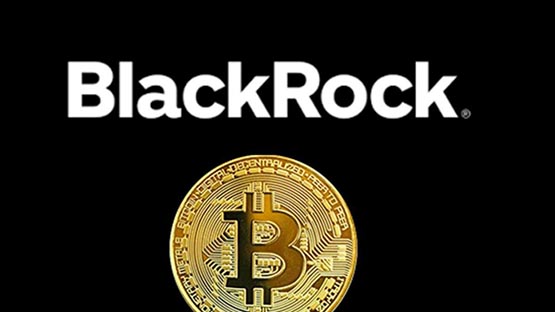 web3.0
web3.0 The financial renaissance of BTC has begun. L2 Network Mirror Staking Protocol aims to solve the pain points of the BTC Restaking track.
The financial renaissance of BTC has begun. L2 Network Mirror Staking Protocol aims to solve the pain points of the BTC Restaking track.For a long time, Bitcoin has been used as an innovative payment method and value storage method. Its ecosystem cannot reproduce the diverse applications and gameplay like Ethereum due to reasons such as not supporting smart contract functions and high handling fees. It was not until the explosion of protocols such as Ordinals and the opening of the mainstream funding floodgates by Bitcoin spot ETFs that the gears of fate of the Bitcoin ecosystem were turned, and it became a key narrative in today's encryption market.
However, as problems such as large-scale network congestion, low transaction speed, and insufficient application expansion have become increasingly prominent, the Bitcoin L2 expansion plan came into being. In this hundred-team battle of Bitcoin L2, Mirror Staking Protocol has taken a different approach and positioned itself as Bitcoin L2 staking infrastructure. In this article, PANews will explain the operating mechanism and differentiated advantages behind the Mirror Staking Protocol.
L2 revitalizes the Bitcoin economy, Mirror uses multi-signature grouping algorithm to break the staking dilemma
The important driving force of the Bitcoin ecosystem including the Layer2 expansion plan has become a track for key funds to ambush, and is presented A blowout burst of kinetic energy. For Bitcoin, the introduction of Layer 2 can not only improve scalability and efficiency, but the programmability of its smart contracts also provides greater possibilities for ecological explosion.
The low staking efficiency and asset security risks faced by the pledge track are restricting the development of the Bitcoin L2 track. In response to such market pain points, Mirror Staking Protocol can provide Bitcoin L2 with a completely decentralized and trustless Bitcoin staking solution to ensure that Bitcoin is 100% securely transferred to L2 and shared with Bitcoin L2.
In reality, since various Bitcoin L2 projects have different asset pledge implementation routes, they also have different differences in pledge efficiency and security. For example, there is an inevitable triangulation problem when bridging Bitcoin L1 to L2 native assets through a multi-signature mechanism. If the number of multi-signature nodes is reduced to improve efficiency, it will be difficult to ensure the risk of evil caused by centralization. For example, Merlin Chain uses Cobo's MPC wallet solution to bridge multiple native assets from Bitcoin L1 to L2. Although the MPC wallet is more secure than ordinary wallets, the smaller number of signers and the lack of a penalty mechanism also make it ineffective. There is a certain gap in security; if you want to maximize the decentralization of asset custody, having enough nodes will bring inefficiency. For example, Stacks requires at least 70% of the node signature power to obtain a valid signature. .
Use remote staking solutions such as Babylon’s Bitcoin staking protocol that allows Bitcoin holders to stake without bridging Bitcoin to a PoS chain, through cryptography, consensus protocol innovation and optimization using Bitcoin scripts Language is used to create a remote staking environment. Although it is more secure and reliable than bridging, it has the risk of Bitcoin asset lock-in and cannot directly access the DApps of the EVM ecosystem. In addition, projects like BounceBit directly host assets to centralized custody service platforms with compliance qualifications such as Mainnet Digital and Ceffu, which builds user trust in the asset transparency and financial audit of these institutions.
Mirror Staking Protocol is a protocol based on the multi-signature node mechanism. It effectively balances Bitcoin staking efficiency, security and decentralization issues by creating a multi-signature group (MSG) algorithm. To make a symbolic metaphor, "If the Bitcoin L2 project is compared to an electric car manufacturer, Mirror provides battery packs; and if the BTC L2 project is a large-scale language model (LLMs), the Mirror protocol is a GPU cloud computing center."

Mirror divides nodes from hundreds to thousands into groups. Each node can form a group with any other 4 nodes, and each group consists of any 5 nodes. , any 3 nodes among the 5 nodes in the group can multi-sign the assets in the group. Each node is also required to stake 1 mBTC in the designated smart contract. Once the node does evil, the money will be confiscated. For example, if there are 1000 nodes, then 3000 record groups are generated. If the number of nodes reaches 1,000 Bitcoins, then each group can host 1 Bitcoin. If a node wants to do evil, then 3 nodes in any group must collectively act maliciously to achieve this, and 3 mBTC must be paid.
At present, the node election has been officially launched. Any user who has made active contributions to the protocol can participate. The node will be selected in four rounds of voting by the community. To ensure security, the protocol requires nodes to stake at least 1 BTC into the Mirror contract and act as decentralized network custodians for 12 months. Once successfully selected for the stage, users will receive MIRR token subscription rights worth up to $120,000, and the winner of the node election will also receive a call option of 1 million $MIRR with an execution price of $0.12. According to the latest official disclosure, since the node election was launched on March 5, 2024, the Mirror Staking Protocol has attracted more than 200 KOLs and more than 50 project institutions to participate in the election on social media such as X in less than 3 weeks. At the same time, more than 50,000 users have participated in voting in this election, with the total number of votes exceeding 3 million.
In addition, in addition to improving asset security through technical solutions, Mirror Staking Protocol has also passed the security audit of the well-known security company SlowMist.
It is worth mentioning that the mBTC generated by the Mirror Staking Protocol and anchored 1:1 with Bitcoin is compatible with EVM and can increase the income potential of pledged assets through the ReStaking mechanism.
Has completed seed round financing and plans to launch the mainnet in May this year
Although the market competition among L2 heroes has entered a fierce stage, Bitcoin L2, which has just gained momentum, has still become the most active capital Higher popular sections. Many popular Bitcoin L2s have not only achieved high financing amounts at high valuations, but also have TVLs of hundreds of millions or billions, which directly reflects the strong market demand. The market's expectations for the ecological development of Bitcoin are high because its huge amount of precipitated assets are in urgent need of being mined. In particular, spot ETFs are driving strong demand for Bitcoin. Judging from the market size of Ethereum, Bitcoin L2 also has great potential for development. Whether Bitcoin’s market value is three times that of Ethereum, or the former’s 296 million global users far exceed the latter’s 124 million. All can give a glimpse of the growth space of this track.
As a builder of the Bitcoin ecosystem, Mirror Staking Protocol has also been recognized by capital. In March this year, Mirror Staking Protocol announced the completion of its first round of financing from UTXO (Bitcoin Magazine’s investment arm), Conflux and IMO Ventures. Among them, Bitcoin Magazine once published that the Bitcoin L2 standard must meet three conditions, including using Bitcoin as a native asset; using Bitcoin as a settlement mechanism to enforce transactions; and demonstrating functional dependence on Bitcoin. Judging from these standards, Mirror Staking Protocol fully meets them.
Its innovative technical solutions are a demonstration of the strength of the team. In addition to coming from the Web3 Native project, the team members of Mirror Staking Protocol also have rich experience in well-known Web2 companies, including Microsoft, Google, MIT, Yao Ban of Tsinghua University, Samsung, Hyundai, Conflux and Decus, etc.
In addition, sustainable token economics is also an important indicator for measuring projects. MIRR is the governance token of Mirror Staking Protocol, with a total supply of 1 billion, of which 24% is used for node election and tokens will be issued within 12 months; 26% is used for user airdrops, which can be determined based on the amount of Bitcoin pledged and invitations The points earned by friends will be rewarded and will be divided into 10 quarters; 14% will be allocated to investors. The seed round investor quota will be unlocked within 12 months, and the institutional round investor quota will be unlocked within 24 months; 18% will be allocated to the project For the team and consultants, 6% will be allocated to the foundation, and the remaining 12% will be used for L2 ecological development.

Currently, Mirror Staking Protocol has completed the test network deployment and will soon open the public beta phase to all network users. According to the roadmap, Mirror Staking Protocol is expected to be launched on the mainnet in May this year, which will allow users to pledge and bridge Bitcoin L1 assets to the L2 network; at the same time, the protocol also plans to cooperate with other Bitcoin L2s and launch "once "Pledge Double Token Revenue" activities, expand ecological applications and launch ecosystem funds to support builders and developers, etc.
The Bitcoin ecosystem is booming. As L2s with technology iterations and upgrades continue to conquer the city, low operating efficiency and lack of application scenarios will gradually become a thing of the past, and they will be activated with the leverage effect of LSD/Restaking. The high liquidity and composability of assets will further unlock more potential of the Bitcoin economy. From the perspective of L2 builders such as Mirror Staking Protocol, compared to "showing off skills", providing a more friendly and secure asset environment and shouldering the heavy responsibility of ecological construction are becoming the key to gaining strong consensus and support from users.
The above is the detailed content of The financial renaissance of BTC has begun. L2 Network Mirror Staking Protocol aims to solve the pain points of the BTC Restaking track.. For more information, please follow other related articles on the PHP Chinese website!
 比特币创世钱包成功添加了26.9枚BTC,中本聪是否复苏?Jan 19, 2024 pm 04:27 PM
比特币创世钱包成功添加了26.9枚BTC,中本聪是否复苏?Jan 19, 2024 pm 04:27 PM比特币之父中本聪(SatoshiNakamoto)消失多年后终于出现新线索。根据Blockchain.com链上数据,最新的数据显示,今天凌晨,有一个以bc1q9开头的地址从币安购买了27枚比特币。根据当前的比特币价格(43,506.45美元),这笔交易价值约为117.4万美元。这些比特币随后被发送到中本聪的钱包地址:"1A1zP1eP5QGefi2DMPTfTL5SLmv7DivfNa"。这一发现引起了人们对中本聪真实身份的猜测与关注。该地址是被标记为"Satoshi1",是中本聪在2009年
 哪个国家对比特币的接受度最高?Jan 19, 2024 pm 02:48 PM
哪个国家对比特币的接受度最高?Jan 19, 2024 pm 02:48 PM比特币当前已经在全球普及,很多企业也开始接受比特币作为支付方式,但是比特币在各个国家发展并不相同,每个国家有自己的法律法规,比如中国已经明确禁止比特币挖矿,但其他国家、地区则表示对比特币的交易表示支持、欢迎,比如非洲、美国等,关于比特币最受欢迎的国家是哪个?也是一个有意思的话题,因为似乎支持比特币的国家都欢迎比特币的加入,根据Google搜索指标,非洲的尼尔利亚在比特币搜索领域名列第一,接下来小编为大家详细说说。比特币最受欢迎的国家是哪个?比特币在非洲大陆的尼日利亚是最受欢迎的国家之一。据统计,
 什么是OCO订单?Apr 25, 2023 am 11:26 AM
什么是OCO订单?Apr 25, 2023 am 11:26 AM二选一订单(OneCancelstheOther,简称OCO)可让您同时下达两个订单。它结合了限价单和限价止损单,但只能执行其中一个。换句话说,只要其中的限价单被部分或全部成交、止盈止损单被触发,另一个订单将自动取消。请注意,取消其中一个订单也会同时取消另一个订单。在币安交易平台进行交易时,您可以将二选一订单作为交易自动化的基本形式。这个功能可让您选择同时下达两个限价单,从而有助于止盈和最大程度减少潜在损失。如何使用二选一订单?登录您的币安帐户之后,请前往基本交易界面,找到下图所示的交易区域。点
 贝莱德向SEC确认比特币现货ETF交易代码为IBITJan 19, 2024 pm 03:30 PM
贝莱德向SEC确认比特币现货ETF交易代码为IBITJan 19, 2024 pm 03:30 PM全球最大的资产管理公司BlackRock(贝莱德)最新文件显示,其正式名称代号为「IBIT」。再进一步:确认代号IBIT贝莱德的现货比特币ETF最近公开确认其交易代码为「IBIT」,在本周一提交给SEC的修订版S-1文件中披露了这一重要进展。重点解读:SEC与贝莱德协商模式中BlackRock(贝莱德)在最新文件中增加了关于基金创建和赎回机制的新设计,这一点尤其引人注目。据了解,BlackRock(贝莱德)希望采用「实物创建」(in-kind)的模式,以增加管理投资组合的灵活性。然而,SEC更倾
 索尼、富达、方舟等公司向美国证券交易委员会递交比特币现货ETF的证券注册申请Jan 19, 2024 pm 02:18 PM
索尼、富达、方舟等公司向美国证券交易委员会递交比特币现货ETF的证券注册申请Jan 19, 2024 pm 02:18 PM随着市场预测美国证券交易委员会(SEC)将在1月8号至1月10号期间批准首个比特币现货ETF,现货ETF似乎已接近最后一步。越来越多的迹象和消息显示这一进展,使得投资者对比特币市场的前景更加乐观。根据最新提交给SEC的文件显示,一些著名的比特币现货ETF发行商,如富达、灰度、方舟、Valkyrie和VanEck等,都已经递交了证券注册的「8-A表格」。而Bitwise则是在上周五就率先递交了8-A表格。这些举动表明这些公司正计划发行比特币ETF,以满足市场对于加密货币的投资需求。这也意味着投资者
 Mercari:日本最大的二手电商开始接受比特币支付,活跃用户达到2200万Jan 19, 2024 pm 02:30 PM
Mercari:日本最大的二手电商开始接受比特币支付,活跃用户达到2200万Jan 19, 2024 pm 02:30 PM根据日本经济新闻报道,二手交易电商平台Mercari计划从今年6月开始接受比特币支付。为了处理比特币支付,Mercari的子公司Melcoin将负责相关服务,并将所有比特币支付转换为日元。这意味着买家可以选择使用比特币进行支付,但卖家最终会收到法定货币。在Mercari平台上,商品的定价是以日元计算的,而不是以比特币计价。然而,用户在结账时可以选择使用比特币作为付款方式。日本最大二手交易电商平台Mercari成立于2013年,是日本最大的二手交易电商平台。2018年,该公司在东京证交所创业板上市
 数字货币交易所的合法性和安全性如何?Jan 30, 2024 pm 02:09 PM
数字货币交易所的合法性和安全性如何?Jan 30, 2024 pm 02:09 PM监管政策仍在不断演变和发展中,一些国家对加密货币持开放态度,将其视为一种数字资产,允许合法交易和持有,而另一些国家则对加密货币持谨慎态度,可能限制或禁止其交易和使用,因此了解在交易所买卖数字货币合法吗?对于投资者合法合规地进行数字货币交易十分重要。在交易所买卖数字货币合法吗?在大部分国家,购买和出售数字货币是合法的,比如比特币、以太坊等。然而,不同国家和地区对数字货币的法律和监管状况存在差异,因此投资者需要根据所在地的法律了解相关规定。在一些国家,政府已经制定了特定的法规和监管机制来管理数字货币
 前SEC主席Jay Clayton:现货比特币ETF的批准势不可挡Jan 19, 2024 pm 03:45 PM
前SEC主席Jay Clayton:现货比特币ETF的批准势不可挡Jan 19, 2024 pm 03:45 PM比特币现货ETF发行商在1月8日提交修订文件和公布费用结构,同时注入种子基金。SEC主席GaryGensler在此时发推呼吁加密相关风险,被视为发行前的最后提醒。SEC前主席JayClayton接受CNBC专访时也表明,批准ETF是势在必行。JayClayton:批准ETF势在必行JayClayton表示,批准比特币ETF已经是不可避免的事情,而且目前没有任何未解决的疑虑。他强调,SEC对各方提供的信息感到满意。CNBC主持人JoeKernen最近了解到投资比特币ETF所需的成本,这是需要让大家

Hot AI Tools

Undresser.AI Undress
AI-powered app for creating realistic nude photos

AI Clothes Remover
Online AI tool for removing clothes from photos.

Undress AI Tool
Undress images for free

Clothoff.io
AI clothes remover

AI Hentai Generator
Generate AI Hentai for free.

Hot Article

Hot Tools

Dreamweaver CS6
Visual web development tools

ZendStudio 13.5.1 Mac
Powerful PHP integrated development environment

Atom editor mac version download
The most popular open source editor

SublimeText3 Mac version
God-level code editing software (SublimeText3)

Safe Exam Browser
Safe Exam Browser is a secure browser environment for taking online exams securely. This software turns any computer into a secure workstation. It controls access to any utility and prevents students from using unauthorized resources.






